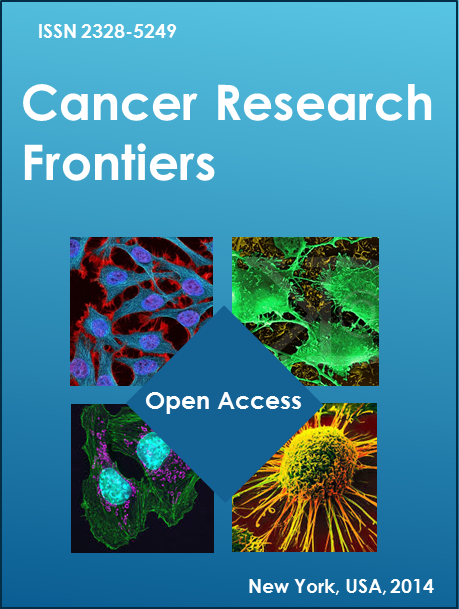Research articles should be divided into sequential sections with appropriate headings: Title page, abstract, introduction, materials and methods, results, discussion, conclusions (optional), acknowledgements, conflict of interest, references, footnotes, figure legends, and tables (with captions).
1 Title page
1.1 The title
The full title must be no more than 250 characters (including spaces) and should be concise and informative. Avoid abbreviations and formulae where possible. A complete list of abbreviations that are acceptable in titles can be found on the abbreviations page.
1.2 Author names and affiliations
Provide the complete names of all authors. Present the authors’ affiliation addresses (where the actual work was done) below the names. Indicate all affiliations with a lower-case superscript number immediately after the author’s name and in front of the appropriate address. Provide the full postal address of each affiliation, including the country name.
1.3 Corresponding author
One author should be designated the corresponding author, and his or her email address or other contact information should be included on the manuscript cover page. This information will be published with the article, if accepted.
2 Abstract
The abstract should describe the main objective(s) of the study, explain how the study was done without presenting extensive experimental details, and summarize the most important results and their significance. Please minimize the use of abbreviations and do not cite references in the abstract. Word limit of the abstract is 250.
3 Keywords
For indexing purposes, three to ten keywords, preferably MeSH terms, representing the main content of the article should be provided immediately after the abstract.
4 Introduction
The introduction should state the objectives of the work and provide a brief review of the key literature, including any relevant controversies or disagreements in the field. The introduction should also provide the rationale for the study and end with a brief statement of what is being reported in the article. The abstract is usually less than one formatted page.
5 Materials and Methods
This section should provide enough details to allow suitably skilled investigators to fully replicate your study. It should include the design of the study, the setting, the type of participants or materials involved, a clear description of all interventions and comparisons, and the type of analysis used, including a power calculation, if appropriate. Only truly new procedures should be described in detail; previously published procedures should be referenced. The following are some special points:
- For studies involving human participants or animal subjects, a statement detailing ethical approval and consent should be included. See here for more information.
- Studies using cell lines must state the origin of the cell lines used.
- If the study characterizes the activity of new compounds, the compound’s structures must be provided.
- Papers with data that should be deposited in a publicly available database should specify where the data have been deposited and provide the relevant accession numbers and version numbers, if appropriate.
- Details including clinical trial registration number must be provided in the methods section if research includes studies conducted on human volunteers or patients.
- Guidelines for animal studies should be provided.
- Methods used for statistical analyses should be described.
6 Results.
Include the rationale or design of the experiments as well as the results; reserve interpretation of the results for the discussion section. Present the results as concisely as possible. Do not repeat verbatim in the text results that are given in tables or figures.
7 Discussion.
The discussion should explain how the results relate to the hypothesis presented as the basis of the study, and provide a succinct explanation of the implications of the findings, particularly in relation to previous related studies and potential future directions for research.
8 Conclusions (optional)
The concluding statement(s) should state clearly the main conclusions of the research and give a clear explanation of their importance and relevance. The conclusion(s) should relate to the objective(s) of the study. Summary illustrations may be included.
The Results and Discussion may be combined into a single section or presented separately. These sections may be further divided into subsections, each with a concise subheading, as appropriate. The sections have no word limit, but the language should be clear and concise.
9 Acknowledgements
Acknowledge anyone who contributed towards the article by making substantial contributions to conception, design, acquisition of data or materials essential for the study; analysis and interpretation of data; or involvement in drafting the manuscript or revising it critically for important intellectual content, but who does not meet the criteria for authorship.
The source of any financial support received for the work being published must be specified. Authors must describe the role of the funding body, if any, in 1) the study design; 2) the collection, analysis, and interpretation of data; 3) the writing of the manuscript; and 4) the decision to submit the manuscript for publication. If the funding source was not involved in these activities, please state, “The funders had no role in study design, data collection and analysis, decision to publish, or preparation of the manuscript”
If a scientific (medical) writer has made significant revision of the manuscript, we recommend that you acknowledge the editor by name, where possible. We suggest wording such as “We thank Dr. Brek, who provided medical writing services on behalf of ABC comany.’
Acknowledgements should be included in a separate headed section before the references section. Permission should be obtained from all those who are acknowledged in this section.
10. Conflict of interest
All individuals involved with a manuscript, including authors, academic editors, reviewers, and commenters must declare all potential competing interests. Where an author gives no competing interests, it will read, “The author(s) declare that they have no competing interests”. For further information, see here.
11 References
Cancer Research Frontiers uses the numbered citation method (Vancouver style for EndNote users). References are to be listed and numbered consecutively in the order of appearance in the text, tables, or legends, using Arabic numerals. In the text, citations should be indicated by the reference number in parentheses.
Only published or accepted manuscripts should be included in the reference list. In-press articles cited within the references should be made available if requested by the editorial office. Limited citation of unpublished work should be included in the body of the text only as “unpublished data” with the written approval to be provided to the editor upon request. Here are some examples:
(1) Journal References
All authors should be included when there are six or fewer (first six authors followed by “et al” when seven or more), followed by the title of article, name of journal abbreviated according to Index Medicus, year, volume, and first and last pages. The format can be easily copied from PubMed.
For example:
Kato T, Miyaki S, Ishitobi H, Nakamura Y, Nakasa T, Lotz MK, et al. Exosomes from IL-1β stimulated synovial fibroblasts induce osteoarthritic changes in articular chondrocytes. Arthritis Res Ther. 2014 Aug 4;16(4):R163. DOI: 10.1186/ar4679
Note: DOI of some reference is not available from PubMed (for example here), you need go to its “Full text link” to find it: “10.1148/radiol.2452061535”. If no DOI found, leave there blank.
(2) Book Reference
The author(s) should be followed by the chapter title (if appropriate), editor(s) (if applicable), book title, place of publication, publisher, year and (if relevant) page numbers.
For example:
Colby VT, Carrington CB. Infiltrative lung disease. In: Thurlbeck WM, ed. Pathology of the Lung. New York: Thieme Medical Publishers, 1988.
(3) Link / URL
All web links and URLs, including links to the authors’ own websites, should be given a reference number and included in the reference list rather than within the text of the manuscript. They should be provided in full, including both the title of the site and the URL.
For example:
The Mouse Tumor Biology Database [http://tumor.informatics.jax.org/mtbwi/index.do].
(4) Abstract
For example:
Lofwall MR, Strain EC, Brooner RK, Kindbom KA, Bigelow GE. Characteristics of older methadone maintenance (MM) patients [abstract]. Drug Alcohol Depend. 2002;66 Suppl 1:S105.
Authors are responsible for the accuracy of the references. Please see a recent issue for examples of reference format. A complete listing of formatting guidelines for references is provided online.
12 Others
(1) File formats Style and language
Cancer Research Frontiers accepts only manuscripts written in English. Spelling should be US English.
Cancer Research Frontiers does not consider pre-submission inquiries. Cancer Research Frontiers will not edit submitted manuscripts for style or language; reviewers may advise rejection of a manuscript if it is compromised by grammatical errors. Authors are advised to write clearly and simply, and to have their article checked by colleagues before submission. In-house copyediting will be minimal. Prior to submission, authors who believe their manuscripts would benefit from professional editing are encouraged to use language-editing and copyediting services.
The following file formats are acceptable for the main manuscript document: Microsoft word (DOC, DOCX), rich text format (RTF), or portable document format (PDF). Manuscripts are preferred in Microsoft Word format and must not be protected.
Manuscripts must be in A4 format, Times New Roman 12 point font, double-spaced, and include line numbers and page numbers. Figures and tables could be included at the end of the document or submitted as separate files.
There is no explicit limit on the length of articles submitted, but we encourage a concise writing style.
(2) Footnotes
Footnotes are not to be used except for designation of the corresponding author or current address information for an author (if different from that shown in the affiliation). Footnotes to tables should be typed directly below the table, designated by superscript Arabic numbers.
(3) Units
Follow internationally accepted rules and convention, use the international system of units (SI). Conventions for abbreviations should be those detailed in: “Baron DN, ed. Units, Symbols, and Abbreviations: A Guide for Biological and Medical Editors and Authors. 5th edition. London: RoyalSociety of Medicine Services, 1994.”
Table I lists the abbreviations for units of measurement and certain physical and chemical quantities that can be used without definition.
(4) Abbreviations
Abbreviations should be kept to a minimum and defined upon first use in the text. Non-standard abbreviations should not be used unless they appear at least three times in the text. A list of abbreviations can be provided, which should precede the statements of competing interests.
- Some common biochemical abbreviations, e.g., ATP, NADH, DNA, and amino acids in proteins, need not be defined. A complete list of abbreviations that are acceptable in the text is available here.
- The trivial and systematic names of enzymes should be those recommended by the Nomenclature Committee of the International Union of Biochemistry and Molecular Biology (IUBMB).
(5) Genetic nomenclature
Organisms should be described by use of standard nomenclature according to the guidelines developed by the American Society for Microbiology.








